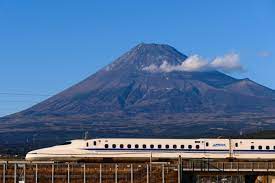- Introduction The purpose of this case study is to examine the implementation and impact of high-speed rail (HSR) as a sustainable transportation solution. The study focuses on a specific country or region that has successfully developed and integrated HSR into its transportation infrastructure, analyzing the benefits, challenges, and outcomes.
- Background Provide an overview of the selected country or region, including its population density, existing transportation system, and the need for sustainable transportation options. Discuss the importance of sustainable transportation in reducing greenhouse gas emissions, congestion, and dependence on fossil fuels.
- Objectives Outline the specific objectives of the case study, which may include:a. Assessing the planning and implementation strategies used to develop HSR networks. b. Analyzing the environmental, social, and economic benefits derived from HSR. c. Examining the challenges faced during the construction and operation of HSR systems. d. Evaluating the long-term sustainability and potential for expansion of HSR networks.
- Methodology Describe the research methodology used for the case study, which may involve a combination of qualitative and quantitative data collection methods. Examples include interviews with key stakeholders, analysis of transportation plans and policies, site visits, and data gathering from relevant reports and studies.
- High-Speed Rail Development Provide an overview of the HSR network developed in the selected country or region. This section may include:a. Infrastructure and technology: Discuss the construction and engineering aspects of the HSR system, including track design, signaling systems, and train technology. b. Connectivity: Analyze the integration of HSR with existing transportation modes, such as urban transit systems and airports, to provide seamless travel options. c. Stations and terminals: Explore the design and functionality of HSR stations and terminals, including accessibility, passenger amenities, and multimodal connectivity. d. Network coverage: Examine the extent and coverage of the HSR network, including major cities and regions served.
- Benefits and Outcomes Discuss the environmental, social, and economic benefits derived from the implementation of HSR. This may include:a. Reduced carbon emissions: Analyze the contribution of HSR in reducing greenhouse gas emissions by promoting modal shift from road and air travel. b. Congestion relief: Assess the impact of HSR on reducing traffic congestion and improving overall transportation efficiency. c. Economic development: Explore the economic benefits generated by HSR, such as job creation, increased tourism, and enhanced regional connectivity. d. Enhanced accessibility: Examine how HSR improves accessibility for both urban and rural areas, providing faster and more convenient travel options.
- Challenges and Lessons Learned Examine the challenges encountered during the planning, construction, and operation of HSR systems. Discuss potential barriers, such as land acquisition, funding issues, and public acceptance. Highlight the strategies employed to address these challenges and share lessons learned from the case study.
- Long-Term Sustainability and Expansion Evaluate the long-term sustainability and potential for expansion of HSR networks. Analyze the operational efficiency, maintenance practices, and integration of renewable energy sources to ensure the ongoing sustainability of HSR. Discuss the potential for extending HSR lines to additional cities and regions.
- Conclusion Summarize the key findings from the case study, emphasizing the importance of HSR as a sustainable transportation solution. Reflect on the overall success of the HSR implementation and provide recommendations for future development and improvement.
- References Cite all the sources used in the case study, including research papers, reports, and relevant literature.
Note: The case study outlined above provides a general structure and content suggestions. It is important to adapt and tailor the case study to a specific




